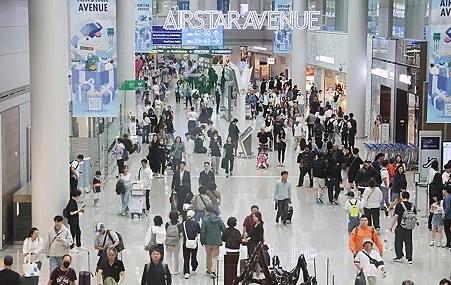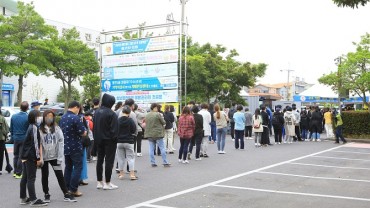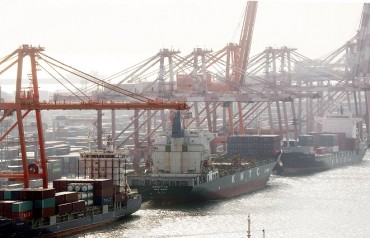
Analysts attribute this to a surge in the popularity of overseas travel, particularly to Japan, placing a significant burden on the recovery of domestic consumption. (Image courtesy of Yonhap)
SEOUL, Nov. 10 (Korea Bizwire) – The slump in domestic consumption, fueled by high prices and interest rates, is worsening. According to third-quarter corporate results, major department stores in Korea—Lotte, Shinsegae, and Hyundai—have experienced a decline in sales compared to last year. Additionally, the growth of the convenience store industry, resilient during the COVID-19 pandemic, is now slowing down.
Analysts attribute this to a surge in the popularity of overseas travel, particularly to Japan, placing a significant burden on the recovery of domestic consumption. The number of tourists heading to Japan is expected to rise due to an increase in flights by domestic airlines and the prolonged depreciation of the yen.
Financial Supervisory Service data reveals a sharp decline in sales for the country’s top three department stores. Shinsegae Department Store’s sales in the third quarter were 604.3 billion won, down 0.9 percent year-on-year—the first decline in three years. Lotte Department Store also experienced a second consecutive quarter of sales decline, down 2 percent year-on-year. Sales growth at BGF Retail and GS Retail, operators of the CU and GS25 convenience store chains, has slowed this year.
While domestic demand remains stagnant, the number of travelers to Japan and other countries has skyrocketed. In the first three quarters of this year, close to 4.9 million Korean tourists visited Japan, constituting 28.1 percent of the total number of foreign tourists during that period. The travel industry predicts that the number of Korean tourists visiting Japan this year will exceed 6 million for the first time since 2018.
The recent decline in the yen’s value has increased passenger seat occupancy rates on Japan-bound routes. Korean tourists, once focused on major cities and famous tourist spots, are now exploring smaller cities.
Overseas spending by Koreans is rising amid the country’s economic slump, primarily driven by increased demand for travel to Japan due to the record-low yen. Experts emphasize the need to attract overseas tourists by improving domestic travel infrastructure to facilitate consumption recovery.
In the first half of this year, outbound consumption spending by domestic residents nearly doubled from the same period last year to 12.4 trillion won. A substantial portion of this spending is believed to have been in Japan. From January to September, Korean tourists spent an average of ¥116,686 per person in Japan, totaling approximately 1.7 trillion won.
While the yen has made travel to Japan more affordable, the cost of traveling in Korea has risen due to inflation. The MZ generation perceives Japan as offering exotic scenery at a similar cost as traveling to Jeju Island, contributing to the shift in travel preferences.
Experts anticipate a significant ripple effect on spending if even a small percentage of overseas travelers return to Korea. The travel industry estimates that if only half of the Koreans who traveled to Japan this year return home, it could boost consumption by more than 3 trillion won, given the average spending of adults in Japan.
Ashley Song (ashley@koreabizwire.com)






